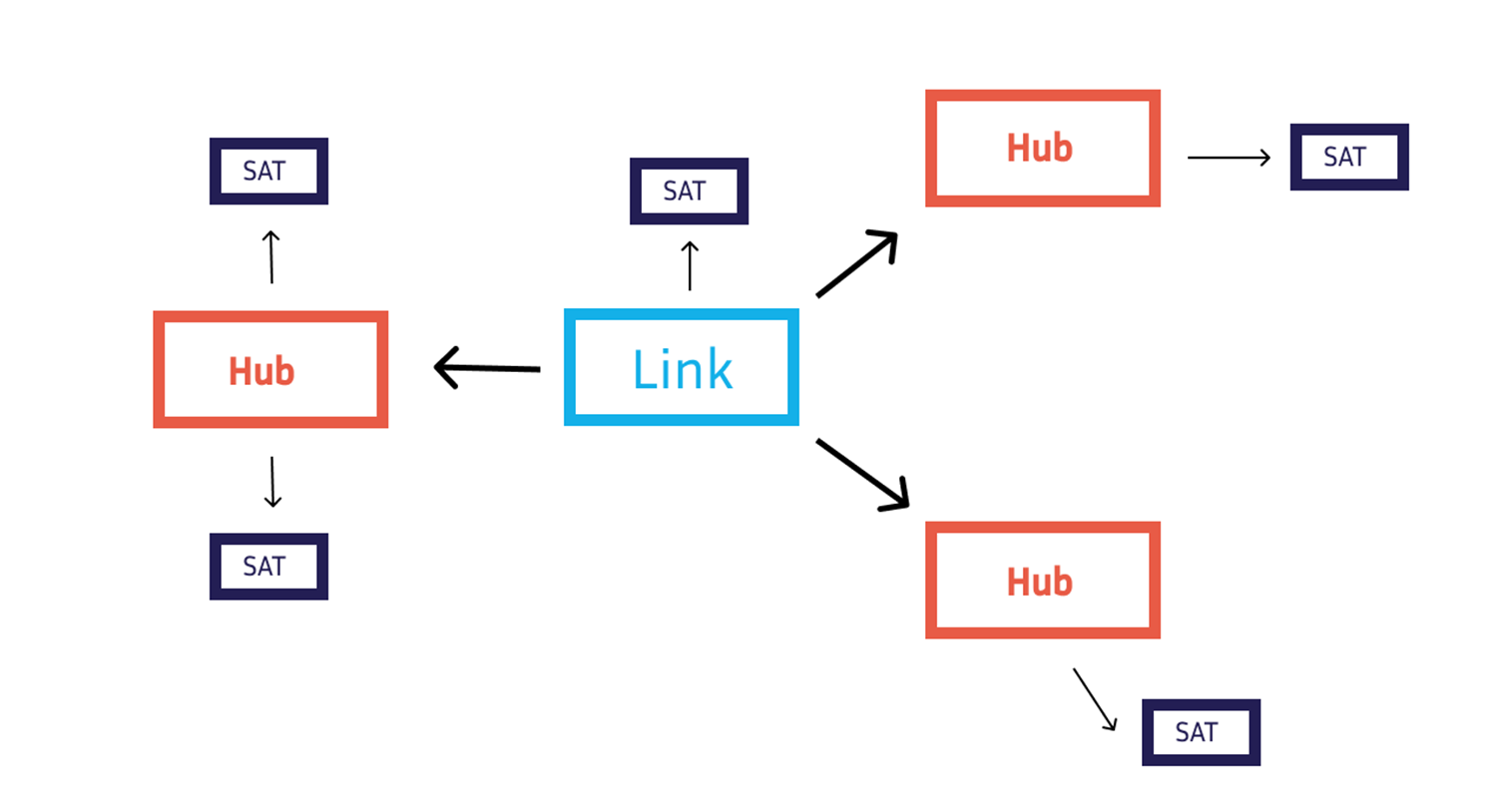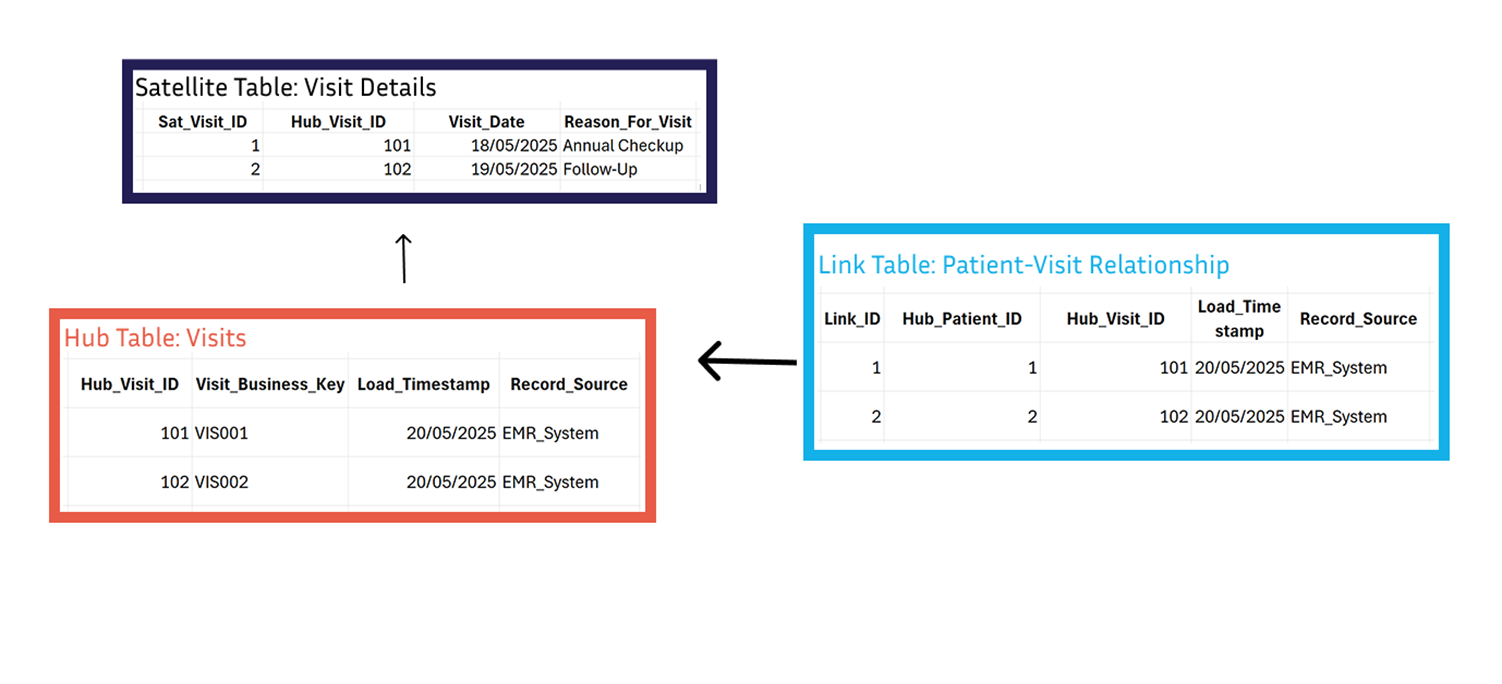Data Vault 2.0 differs from Star or Snowflake Schemas by offering a solution designed for flexibility. Its schema is built on three main components; the Link, Hub and Satellite tables.

Hubs: Defines a fundamental business principle and stores its corresponding primary key. Visit ID in the Visits table below.
Links: Stores information on foreign keys to connect the hubs, such as the patient-to-visit relationships captured in the Patient_Visit table.
Satellites: Hold descriptive attributes about the primary keys within the hubs and links, like visit details (date and reason) stored in the Visit Details table.

Pros and Cons of Data Vault 2.0
Pros
- Scalable: Well suited to large and growing data sources.
- Flexible: Adapts to changing business rules and consolidates data from different systems without major schema changes.
- Historical Data Tracking: The schema's modular design, which separates descriptive attributes and records updates as new entries, enables a complete audit trail.
Cons
- Complex: Designing and managing the schema requires specialized knowledge and training.
- Performance Issues: Querying across multiple layers may impact speed.
- Storage Demand: Storing detailed historical data can consume significant space.
Data Vault 2.0 strikes a balance between structure and flexibility, making it ideal for dynamic, large-scale data environments. Its pros often outweigh the cons for those managing complex, rapidly evolving data.
